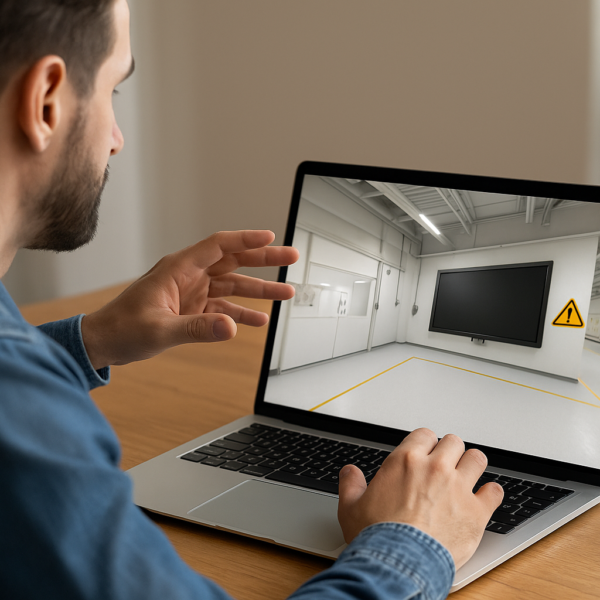So, let’s explore in which way is video considered a learning lever, and what pedagogical benefits can a designer draw from this method to deliver quality training courses to their learners.
What is Video Learning?
Video Learning refers to the use of explanatory videos to train and transmit knowledge more easily to learners by using visual and auditory signals. It is therefore a remote learning device that can be accessed very easily by learners on all types of reading instruments, wherever they are and whenever they want.
Integrating videos into an e-learning course is a practice that appeals to trainers and designers. They can capture learners’ attention smoothly and explain concepts that are difficult to put across in writing.
Video: many educational benefits
Is it absolutely necessary to use a video to enhance your e-learning course?
Here are 4 key benefits of video learning that we have selected for you:
Ease of implementation for the designer
There is a tendency to think that making a video requires a lot of resources and that it is therefore preferable to use PowerPoint-type tools to make the texts more digestible and dynamic. However, the content of a video can be easily produced at home and in the office with a simple smartphone and microphone, or even with free software directly on a PC and tablet. In addition, there are many distribution platforms on the Internet that allow you to upload these videos effortlessly.
Giving learners more flexibility in their learning
What could be easier to use than the video format for training? Learners now have a variety of viewing modes (PC, tablet, smartphone) that can be used at home, in the office or on the move. They can now adapt their training to their personal schedules.

Improve knowledge retention
Video is an effective teaching tool to help your learners retain information by appealing to visual and auditory memory. Indeed, thanks to the use of images, visual effects and sounds, you can have learners experience short but emotionally powerful situations. For example, you can make a demonstration video that explains how to apply a technique or have a mentor fluently demonstrate a concept. Sometimes text is not enough and a visual and/or oral explanation/representation will improve the overall retention rate.
Reduce training time by combining the benefits of microlearning
Microlearning is an innovative learning method that offers learners the opportunity to learn through very short learning modules, dedicated to a specific notion and available on demand anywhere, anytime and on any device (ATAWAD). Microlearning therefore puts the learner at the heart their training (Learner Centric) and promotes memory retention. Video is a perfect tool for reproducing these benefits by opting for a clear discourse and getting to the point.
Our expert opinion: Introduce Video Learning at the end of each training course to summarise the essential points that learners must remember!
Designing educational videos with VTS Editor is possible!
Do you want to implement Video Learning in your training? If yes, we have some good news for you! The VTS Editor authoring software includes the Video Recorder Pro – the ability to record your project in video format. Thus, VTS Editor is the ideal authoring software to implement Video Learning in your training course. Allowing your imagination to go wild and create life-like scenarios featuring realistic or cartoony 3D characters, playing the part of real mentors for your learners, in customised or ready-made sceneries. All of which, will be in addition to focusing on the atmosphere by playing with visual effects and sounds to make your videos more memorable, and stimulate visual and auditory memory!
Creating innovative Video Learning modules at a lower cost is possible with the BRONZE Pack. Come and check it out now:












